As the temperature drops in the fall, I like to sit on the deck and watch the season change while snuggled in a nice fuzzy robe or pair of lined jeans. Choosing winter clothes, pajamas, and bedsheets can prove challenging, though. For example, if you compare fleece vs flannel, which is better?
The biggest difference between fleece and flannel is that fleece is made of synthetic material and flannel is made of natural material. Flannel also features a loosely woven structure, while fleece has a knitted structure. Both types of fabric are popular choices for winter wear, bedding, and pajamas.
You are viewing: Which Is Softer Fleece Or Flannel
In this article, you will get to compare the key characteristics of both types of fabric. You will also find a comparison of each fabric for popular uses, such as pajamas and bedsheets. Finally, you will find out how these materials compare to microfiber.
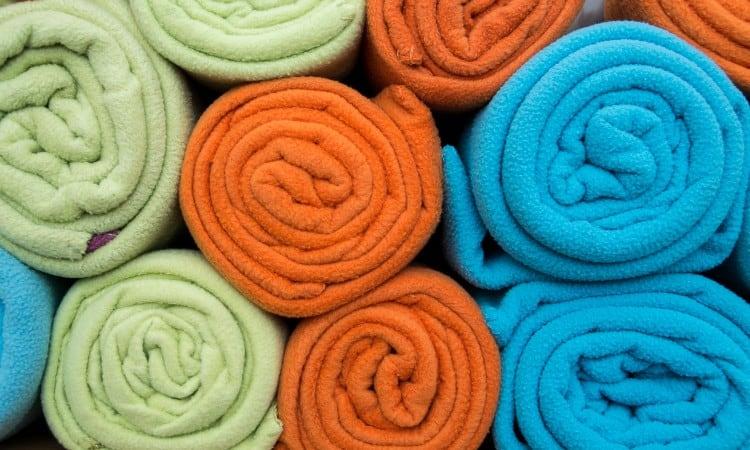
Fleece Vs Flannel: Key Points
Fleece and flannel offer cozy comfort as pajamas, shirts, and bedding, but they also have some important differences. This summary will give you an overview of the key points you need to know as you compare these fabrics.
- Fleece holds heat better and thus provides more warmth.
- Flannel has a breathable cotton weave that can keep you warm and prevent you from overheating at the same time.
- Fleece has greater strength and durability and will hold up in the wash for a long time.
- Flannel gets softer and wears out over time.
- Flannel can shrink in the wash, and fleece will not.
- Both materials offer excellent insulation.
What is Fleece?
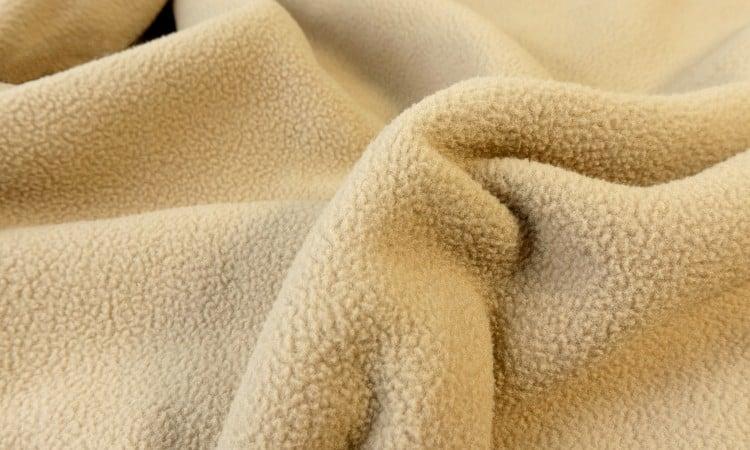
Fleece is a warm, soft, brushed knit made of polyester. It is not a type of flannel. Fleece first appeared in the textile world in the 1970s, when a winter clothing manufacturer wanted a cheaper alternative to wool. This fuzzy fabric does look a bit like a sheep’s coat, which is where its name came from!
Now famous as an outdoor and sportswear brand, Patagonia did a lot to launch the first version of fleece sportswear. Today, fleece remains extremely popular for outerwear and sportswear for cold weather because of its unique moisture-wicking abilities. It also has a lightweight, plush texture that makes it a favorite for comfy winter evenings at home.
Despite all these lovely characteristics, fleece begins life as melted plastic. Like all forms of polyester, it comes from petroleum derivatives. Fancy textile sciences turn this liquid plastic into tiny fibers that then get twisted into yarns and knitted into fabric.
Of course, what makes fleece so unique is its soft pile-the velvety nap on its surface. This comes from two more steps in the manufacturing process.
First, the fabric rolls through a machine called a napper, which scrapes bristly brushes over the surface of the fabric. The bristles raise fine fibers out of the knitted fabric.
Second, another machine shears the loose fibers in an even cut, creating the smooth, soft pile of the material!
Many types of fleece, such as Polar fleece, have a double-pile, meaning that they have this soft fuzziness on both sides of the material.
Fleece might originate as a chemical reaction and come out of giant textile factories, but it does provide a soft, really cozy warmth. It’s also lightweight, which gives it additional appeal for athletic wear.
As a synthetic material, it has great moisture-wicking properties, meaning that it sucks up your sweat and allows the moisture to evaporate into the air.
In the past few decades, fleece has become the go-to warm fabric for hats, mittens, coats, pajamas, and blankets.
What is Flannel?
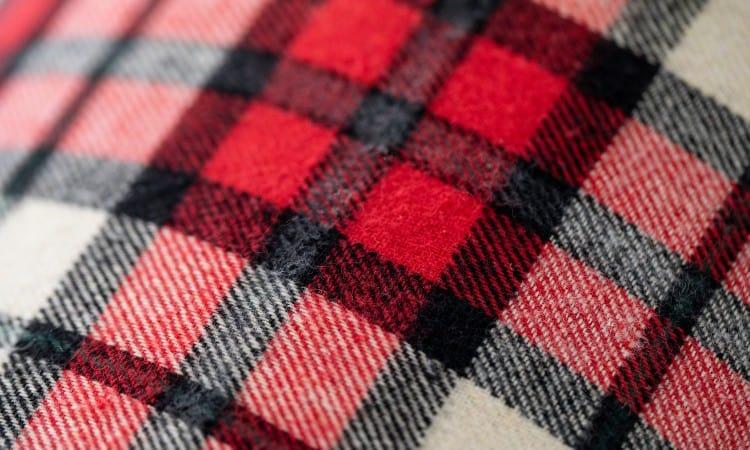
Flannel is made of loosely spun cotton woven together and then brushed on one side to create a soft nap. It traditionally features a plaid design, though today you can find flannel in many different styles.
Unlike fleece, flannel has a long history reaching back as early as the 17th century, when it usually featured heavier, warmer wool threads. These days, a loose cotton weave makes flannel a popular medium-weight fabric known for its warmth and breathability. That said, you can still find certain types of flannel that contain a blend of other fibers, including wool and even silk.
Though you may think flannel means plaid, flannel simply describes a particular kind of material. The idea of a plaid flannel shirt may have started with popular grunge bands in the 90s or the hipster theme of the early 2000s (believe it or not, something besides man-buns came out of the 2000 fashion era!).
Flannel almost always uses all-natural fibers, primarily cotton. It can have either plain or twill weave, but either type will remain loose to promote airflow through the threads. This breathability makes flannel great at temperature regulation.
While flannel doesn’t excel at moisture-wicking, it does have excellent breathability. Cotton tends to absorb moisture, though, so flannel won’t quickly evaporate your sweat the way fleece will.
Most importantly, flannel has a very soft nap and provides a great deal of warmth. You can find flannel in bedsheets, the lining of coats, jackets, and boots, and in clothing like shirts and jackets.
What is the Difference Between Fleece and Flannel?
As you already know, the main difference between fleece and flannel is what they are made of. Fleece has synthetic fibers, and flannel features loose cotton threads. But because of their different fibers, these materials have several unique characteristics.
Take a look at this in-depth comparison of key features such as warmth, softness, and sustainability for each type of fabric.
Warmth
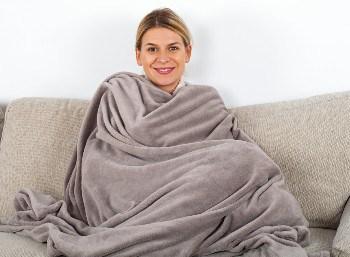 Most of the time, fleece has a thicker nap and also provides more warmth than flannel. Now, flannel is quite a cozy and warm fabric in its own right! But in comparison, fleece usually wins the warmth contest.
Most of the time, fleece has a thicker nap and also provides more warmth than flannel. Now, flannel is quite a cozy and warm fabric in its own right! But in comparison, fleece usually wins the warmth contest.
The exception to this rule is that some high-quality types of flannel contain wool fibers, and these types of flannel provide intense warmth!
What makes fleece so warm? Its many tiny, raised polyester fibers trap heat and hold them in the loose, velvety surface of its pile. If you have ever stuck your hand into your dog’s fur in the middle of winter, you know how all those tiny hairs hold immense warmth against your pet’s skin! Fleece fibers work the same way when you wear them against your skin.
Softness
 Fleece is often softer than flannel, but if you have sensitive skin, you may find that its synthetic fibers also have a slightly plasticky feel. Of course, you will find exceptions to this rule, especially in flannel made with silk fibers. This will probably feel much softer than even the softest fleece!
Fleece is often softer than flannel, but if you have sensitive skin, you may find that its synthetic fibers also have a slightly plasticky feel. Of course, you will find exceptions to this rule, especially in flannel made with silk fibers. This will probably feel much softer than even the softest fleece!
Read more : Which Is Better One Piece Or Two Piece Toilet
Because both types of material go through a napping process, they both feature an incredibly soft texture on at least one side of the material. Fleece usually has a thicker, deeper pile, while flannel has a faint fuzziness on top of its woven surface.
If you rest your hand on top of the fleece, you feel as if your fingers can sink into the thick surface, at least a little. When you rest your hand on a piece of flannel, you typically feel a cozy fuzziness.
Durability
Technically, fleece will always outlast flannel because its polyester fibers cannot biodegrade. In terms of long-term quality, though, you will find differing opinions.
First, fleece does not pill, while flannel will eventually collect many annoying little bobbles over its surface.
Second, fleece does not shrink or get softer in the laundry. Flannel often does.
That said, fleece can lose its fluffy surface and turn into a thick mat over time. It also loses thousands of tiny microfibers in every wash. For this reason, you may prefer the gradual softening of flannel instead.
Flannel does wear out more quickly, but it may retain its softness and appearance longer.
But the bottom line is that flannel can last a good while given the proper care, but it isn’t naturally tough like synthetic materials.
Easy Care
You can follow the same easy steps to care for both types of cloth. This process will prolong the life of each material!
Please note that you should always check the manufacturer’s care instructions on the label inside your clothing before attempting any of these steps.
- First, turn the garment inside out if you’re washing clothing. If you’re washing sheets or a blanket, skip this step!
- Set your washing machine to a delicate cycle. This cuts down on the friction created when clothes rub against each other in the washing machine and lowers the chances of pilling.
- While you’re messing with the settings on your machine, make sure you set it to use cold water as well. Hot water will cause your flannel items to shrink and can damage the plastic fibers in fleece material.
- Regular laundry detergent will work fine, but make sure you don’t add any bleach or fabric softener, as both of these items can damage the pile of the fabric.
- If possible, don’t add anything made of a different kind of material to this load of wash. Other fabrics will create lint that can stick to both fleece and flannel and make a big mess.
- Finally, you should air-dry your fleece or flannel items if possible. If you can’t, use the permanent press setting on your dryer.
It’s true that flannel can shrink in the wash, especially if you use hot water or place your flannel items in the dryer on a high-heat setting. Flannel has a loose weave that can constrict under adverse conditions like exposure to what. Its cotton fibers also react strongly to heat and can shrink and expand in different temperatures.
That said, fleece has a terrible tendency to collect static electricity, which gets really bad in the dryer.
Neither material offers easier care than the other, but both can quickly sustain damage if you don’t follow the proper cleaning procedures!
Breathability
 Flannel is much more breathable than fleece. Flannel has a loose weave that promotes easy airflow between the individual threads, but it also has highly permeable cotton fibers.
Flannel is much more breathable than fleece. Flannel has a loose weave that promotes easy airflow between the individual threads, but it also has highly permeable cotton fibers.
Fleece has very solid, very un-permeable polyester fibers, though it does have a loose knit that can allow a limited amount of air to pass through.
So, why does breathability matter if you want warmth from your winter clothes? Well, if you’re outside hiking, you want your winter jacket to keep you warm! That said, you also don’t want to feel smothered in your body heat.
Flannel allows air to flow from inside your jacket to outside it, and vice-versa. This allows much more temperature regulation than the heat-trapping nature of fleece.
Breathability also factors into comfort in the bedroom. If you like to feel cool and calm at night, you probably like highly breathable sheets. If you always feel cold at night, though, you may prefer fleece.
Cost
It’s tricky to compare flannel and fleece costs because the quality or kind of the material makes a big difference. For instance, a polar fleece hoodie will typically cost more than your average flannel overshirt. On the other hand, flannel bedsheets usually cost more than fleece sheets.
The general rule of thumb is that synthetic materials cost less to produce, so they also cost less for consumers to purchase. Natural products like cotton cost more to produce, so they usually cost more when they get to store shelves as well.
Of course, brand names and current trends also make a big difference in pricing. For example, you can find a fleece shirt sold by a big brand name for twice the price of a flannel shirt sold by a lesser-known brand.
Sustainability
If you value eco-friendly fabrics, you’re not going to love fleece or flannel. However, both fabrics have sustainability issues that concern environmentalists.
Let’s take a look at flannel first. Cotton production uses massive amounts of water. It takes a lot of water to grow cotton, and it also takes a lot of water to dye it during the manufacturing process. On top of its high water consumption, cotton also usually requires pesticide treatments that can damage the environment.
Some kinds of fleece get made from recycled bottles, which is great! However, most polyester comes from petroleum. As you know, anything that comes from a non-renewable resource isn’t great for the environment.
On top of this, fleece has a really serious issue with shedding. It loses thousands of tiny microfibers when washed, and these invisible particles flood out into the water system, where eventually fish consume them. They become part of the human food chain!
Now, this doesn’t mean you shouldn’t enjoy your lovely flannel sheets or comfy fleece hoodie! But if you get a chance to search for fleece made from recycled materials or organic cotton, think about the planet and vote with your dollars for the more sustainable option.
Fleece or Flannel: Which is Better?
If you’re still wondering which is better, fleece or flannel, the answer is that each fabric stands out for particular uses. Check out this analysis of the best fabric for popular cold-weather items like sheets, jackets, and coat linings.
Pants
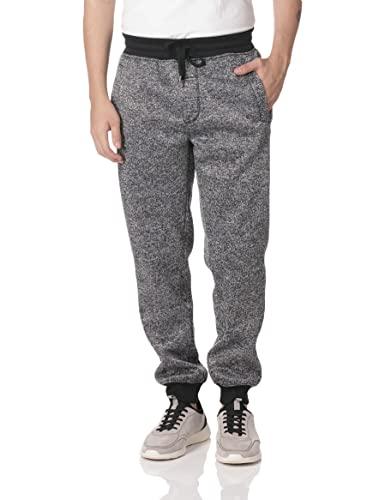 Fleece offers a bit more bulk that makes it great for a fuzzy kind of sweatpants. Flannel makes good pajama pants, but you don’t wear these guys on their own as often due to their lightweight feel. That said, both types of material make great casual lounge pants perfect for wearing around the house on your day off!
Fleece offers a bit more bulk that makes it great for a fuzzy kind of sweatpants. Flannel makes good pajama pants, but you don’t wear these guys on their own as often due to their lightweight feel. That said, both types of material make great casual lounge pants perfect for wearing around the house on your day off!
Read more : Which Is The Largest Of The Four Information Technology Pathways
Fleece pants will keep you warm and dry even in icky weather conditions. Plus, you may want to consider wearing these pants as an underlayer for serious outdoor activities like hiking cross-country or skiing. Fleece traps heat so well that you can carry on having fun all day with this fabric keeping you warm!
Jacket
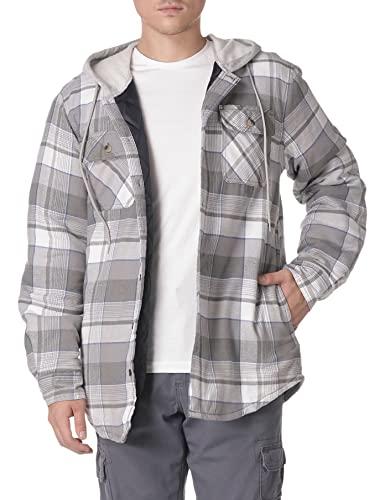 Fleece and flannel both make great jackets, but for different purposes. Flannel jackets will keep you toasty warm and provide you a stylish look (if you’re into that hipster going-camping-for-the-weekend look). Fleece will keep you ultra-warm, sweat-free and also offer some protection from the weather.
Fleece and flannel both make great jackets, but for different purposes. Flannel jackets will keep you toasty warm and provide you a stylish look (if you’re into that hipster going-camping-for-the-weekend look). Fleece will keep you ultra-warm, sweat-free and also offer some protection from the weather.
For this reason, this fuzzier fabric may work better for outwear, especially for rainy or snowy weather. It isn’t fully waterproof, but it does provide much more water resistance than flannel.
Pajamas
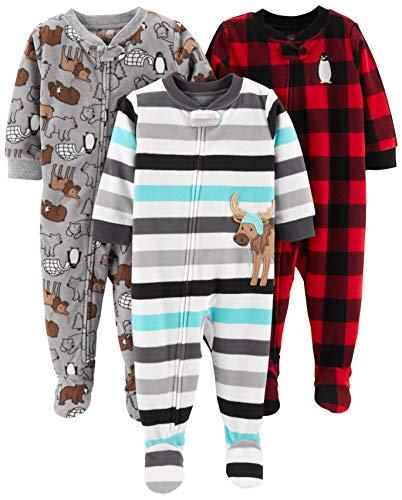 Your body temperature will determine whether fleece or flannel pajamas work best for you. Both materials can provide equally comfortable PJs. The big difference lies in whether you want breathability or moisture-wicking abilities from your nightwear.
Your body temperature will determine whether fleece or flannel pajamas work best for you. Both materials can provide equally comfortable PJs. The big difference lies in whether you want breathability or moisture-wicking abilities from your nightwear.
Flannel pajamas wrap you in a cozy embrace and keep your temperature regulated through the night. You won’t feel stifled or too hot.
Fleece pajamas, on the other hand, will keep you very warm and will not regulate your temperature with any cooling airflow. That said, if you get sweaty at night, they will allow the moisture to evaporate quickly, so you won’t wake up feeling clammy.
Sheets
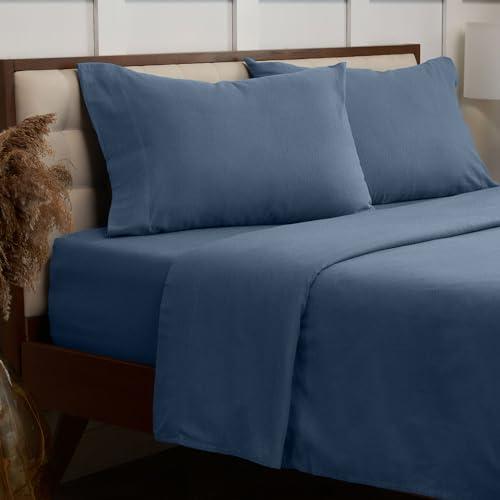 Once again, your personal preference will determine whether fleece or flannel sheets work best for you. You may really like a warm but not-too-hot bed at night. In that case, go for the breathability and softness of the flannel! If you desperately need to feel warm in the winter, though, wrap yourself in the thicker pile of fleece bedding.
Once again, your personal preference will determine whether fleece or flannel sheets work best for you. You may really like a warm but not-too-hot bed at night. In that case, go for the breathability and softness of the flannel! If you desperately need to feel warm in the winter, though, wrap yourself in the thicker pile of fleece bedding.
In terms of easy care, flannel sheets really shouldn’t go in the dryer. Some high-end manufacturers will sell sheet sets that come just a bit large so that they can shrink down to size as you wash them. You can’t count on that touch of luxury, though!
Fleece bedding gives you a bit more leeway since it won’t shrink in the wash and will resist wrinkling. For this reason, you may value this synthetic material over flannel as a time saver.
Lining
Fleece and flannel both commonly serve as a lining in jeans and jackets. Both will keep you plenty warm, but flannel usually makes a more comfortable lining in the long term. This is because flannel provides more breathability, which is important in a garment with multiple layers.
Flannel also does not gather static electricity like fleece. You won’t have to worry about getting a shock in unfortunate places if you wear flannel-lined jeans!
Blankets
Both fleece and flannel make excellent blankets and throws! You can find soft, pretty fleece and flannel blankets in pretty much any color or design you want.
That said, you should probably go with flannel for a baby blanket, as synthetic materials can sometimes cause allergic reactions.
If you plan to sew a blanket, though, you will want to use fleece. Flannel unravels super fast due to its loose weave, making it challenging to cut and sew. Fleece does not unravel when cut because it has a knitted construction with threads looped over each other.
Flannel vs Fleece: Which Is Warmer?
If you want an absolute answer, fleece is warmer than flannel. This is because it traps heat and does not allow it to pass through the fabric of the other side. Flannel holds a good bit of warmth in its loose, velvety nap, but it has easy breathability that allows heat to escape through its all-natural fibers.
You may find fleece too warm because of this, though. In this case, you might prefer the temperature-regulating quality of flannel clothing or bedding.
Because of its epic heat-trapping abilities, you may not want to wear fleece directly against your skin. Instead, you can wear fleece as outerwear and use flannel as the lining in your pants or coat. This will allow a bit more breathability as you go about your day!
Popular Products Made of Fleece and Flannel
Flannel and fleece are both so popular that you can find them in everything from mittens to bedsheets. These warm materials are the go-to fabrics for any kind of cold-weather apparel or bedding, as you can see from these two product reviews!
Comfy Pajamas 2-Piece Warm and Cozy Flannel
No products found.If you need cute and No products found., look no further! This set of button-down top and drawstring pants gives you a casual at-home style that comes in a remarkable fourteen different plaids and prints.
Better yet, this brushed flannel features 100% pure cotton to ensure that lightweight, breathable feel that will keep you comfortable all night long.
The long sleeve, button-down top comes with a fold-over collar and two nicely sized pockets for stashing a tissue or hair tie while you get ready for bed. Finally, the elastic waist on the pants keeps the fit loose, so you never feel constricted while you sleep!
Hooded Full-Zip Polar Fleece Jacket
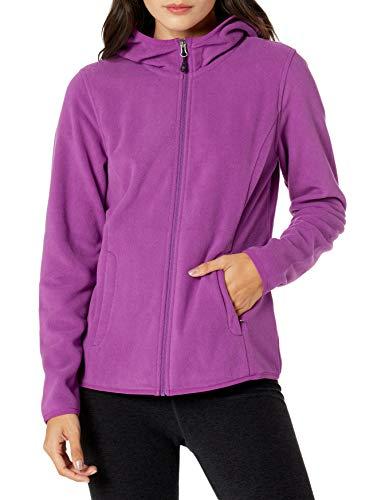 When you need to keep warm on the move, you can’t go wrong with a fleece jacket. This trendy number made of 100% polyester has a zipper closure and a hood with a collar that comes right up around your neck for extra insulation. You can select the hoodie in ten fun colors, such as pink and aqua.
When you need to keep warm on the move, you can’t go wrong with a fleece jacket. This trendy number made of 100% polyester has a zipper closure and a hood with a collar that comes right up around your neck for extra insulation. You can select the hoodie in ten fun colors, such as pink and aqua.
The zipper side seam pockets give you a nice bit of storage or a cozy place to tuck your hands. This hoodie will keep you toasty warm all on its own, but you can also consider using it as a base layer if you plan to remain outdoors in cold temperatures for a long time!
What is the Difference Between Fleece and Microfleece?
The difference between fleece and microfleece is that microfleece is the thinnest, most lightweight version of fleece you can find. In technical terms, microfleece has to weigh less than 200 grams per square meter (gsm) of material.
Because it’s so very lightweight, microfleece tends to have a silkier feel than most other weights of fleece. It also lacks the bulk of polar fleece.
You will often find products like microfleece bedsheets compared to flannel. Good-quality microfleece makes excellent sheets, but sometimes badly made sheets can wear out quickly in the wash because of the extremely thin fabric.
You will also see microfleece featured in gym shirts, leggings, and bathrobes.
Conclusion
Fleece has a thick pile made of synthetic fibers, and it holds onto warmth just a bit better than flannel. Flannel has a loose weave made from all-natural cotton, which provides greater breathability.
Both types of material will give you warm, soft, comfortable winter clothes and bedding. That said, both types of the fabric also present sustainability issues for consumers who care about the environment.
When you get ready to go outside for a winter hike, do you prefer fleece or flannel for your cold-weather gear? Leave a comment below to let us know!
Source: https://t-tees.com
Category: WHICH
